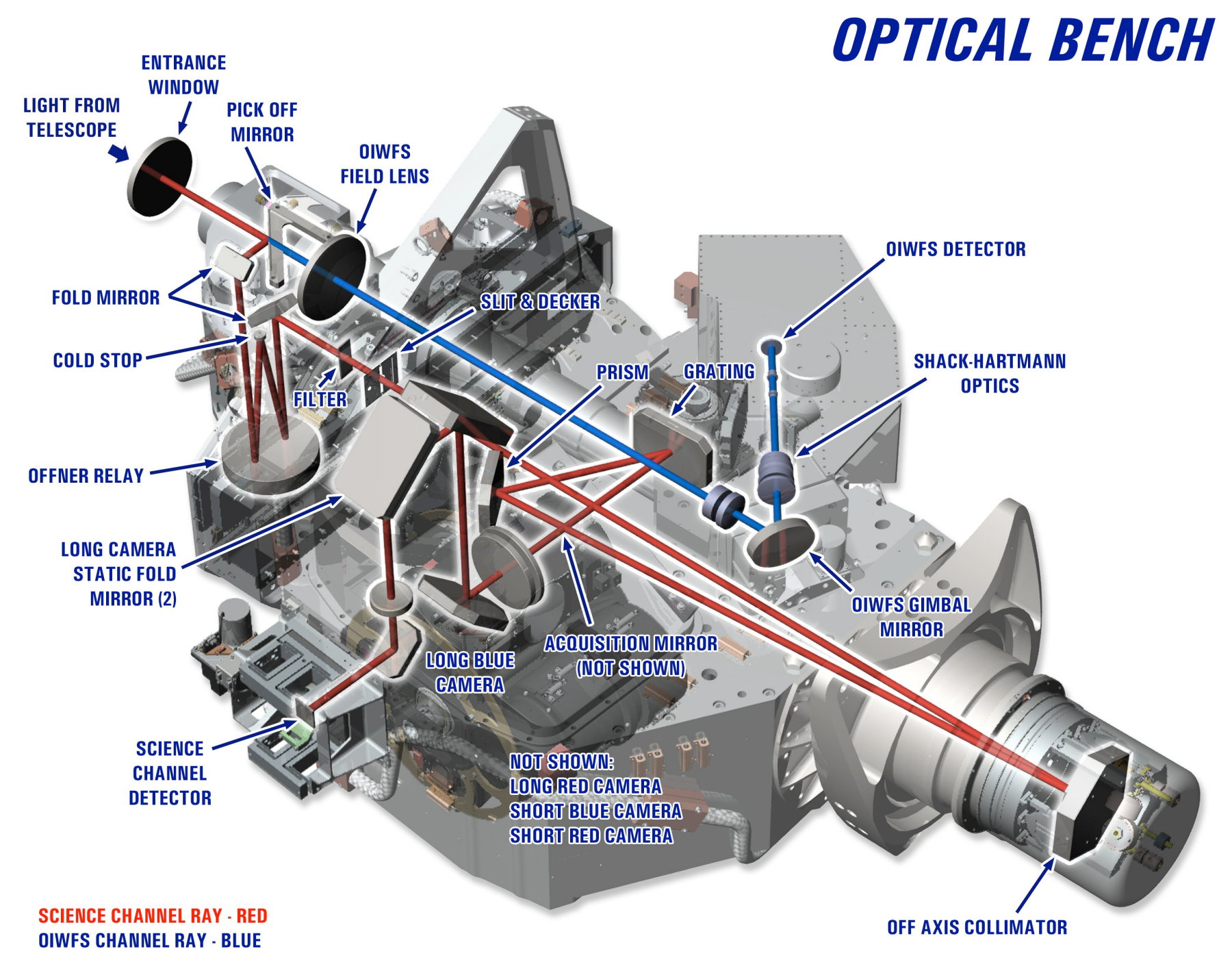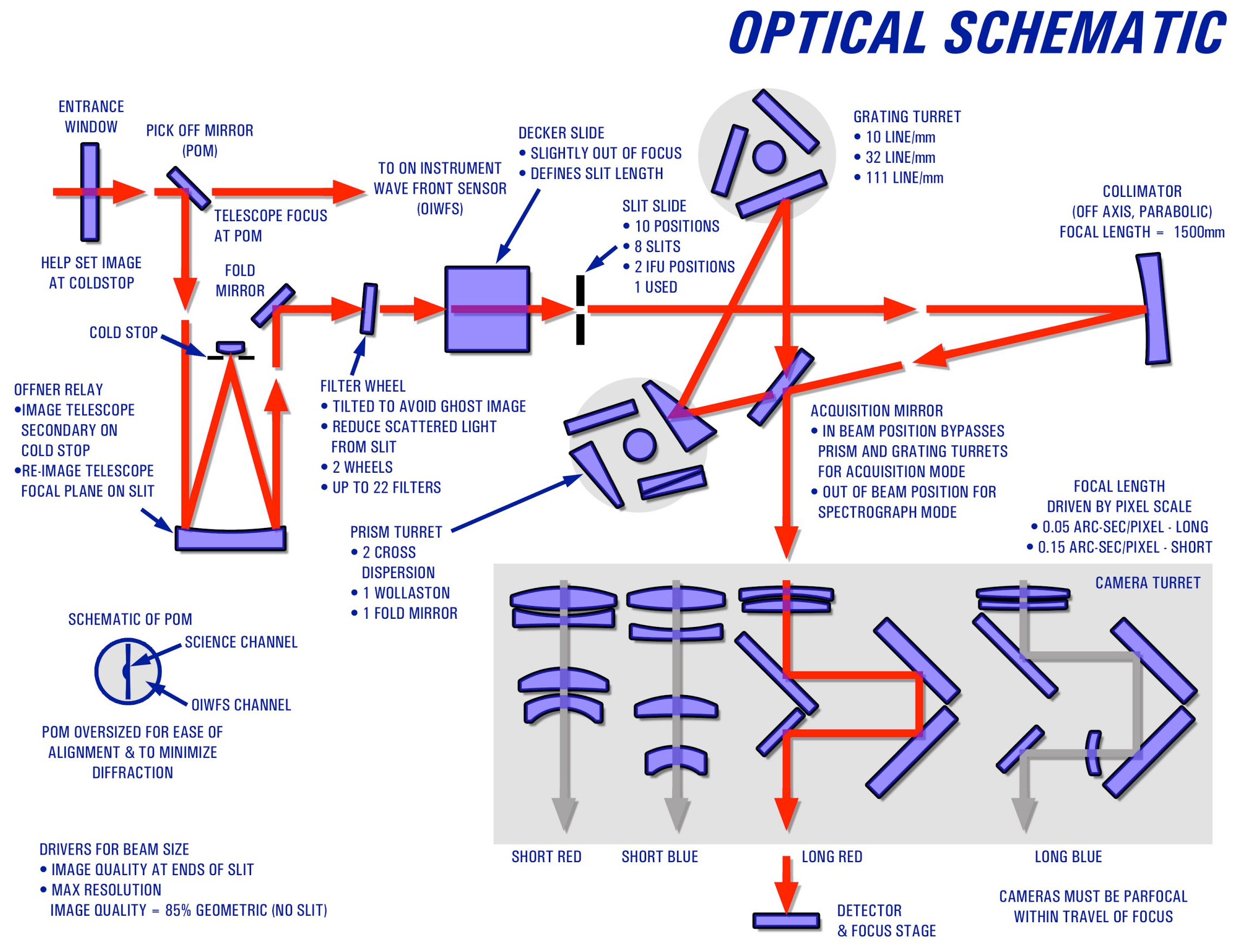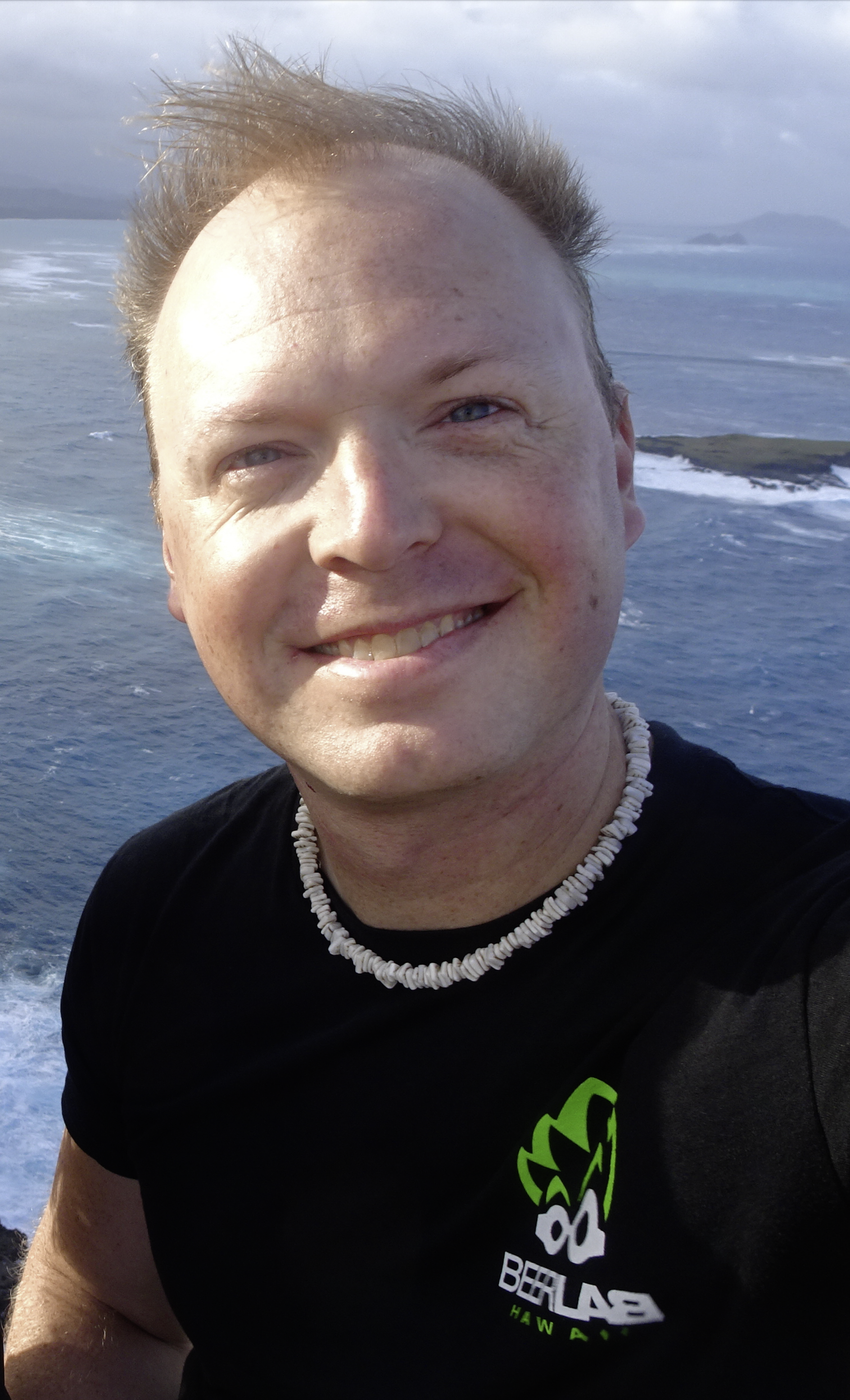
Capability Summary
Spectroscopy
- Resolutions
- 1200−18000 for a 2-pixel slit (depending on the camera and grating combination)
- Modes
Integral Field Spectroscopy
- Modes
- Low-Resolution IFU (1.0−2.5 µm with the short blue camera, read more)
- Spectral resolution 1700−7200 (with the short blue camera, depending on grating)
- Field of View 3.15" x 4.80"
- Spatial Sampling 0.15" x 0.15"
- Simultaneous coverage = 100−660 nm
- High-Resolution IFU (1.0−5.4 µm with the long cameras, read more)
- Spectral resolution 1200−19000 (depending on camera and grating)
- Field of View 1.25" x 1.80"
- Spatial Sampling 0.05" x 0.05"
- Simultaneous coverage = 30−1000 nm
- Low-Resolution IFU (1.0−2.5 µm with the short blue camera, read more)
Imaging (Read more)
- ~0.1-0.34 arcmin^2 field of view (varies with filters/camera)
- 0.15"/pixel (short camera) and 0.05"/pixel (long camera) spatial sampling
- Order-blocking, broad and narrow band filters
Guiding Options (Read more)
- PWFS2
- Altair (NGS, LGS, LGS+P1)
Get the sensitivity
Get to the integration time calculator
GNIRS was built by NOAO in Tucson, Arizona and delivered to Cerro Pachón in late October 2003. Commissioning of the majority of the modes took place in stages during 2004. GNIRS was first made available for science use in 2004B. The instrument was damaged in 2007 while at Cerro Pachón and was repaired at Gemini North. Since 2010 it has been available for use on the Gemini North telescope. The commissioning of the LR-IFU optical sub-system provided by the University of Durham (UK) has been completed in 2023. While the commissioning of the HR-IFU optical sub-system, also provided by the University of Durham (UK), has been completed in 2024.


Announcements
Instrument Team
gn Instrument Scientists


gn Additional Support Staff
- Cicero Lu
- Jennifer Miller
- Mark Rawlings
- Andy Stephens
- Hyewon Suh
- Siyi Xu
Email: gnirs_science@gemini.edu